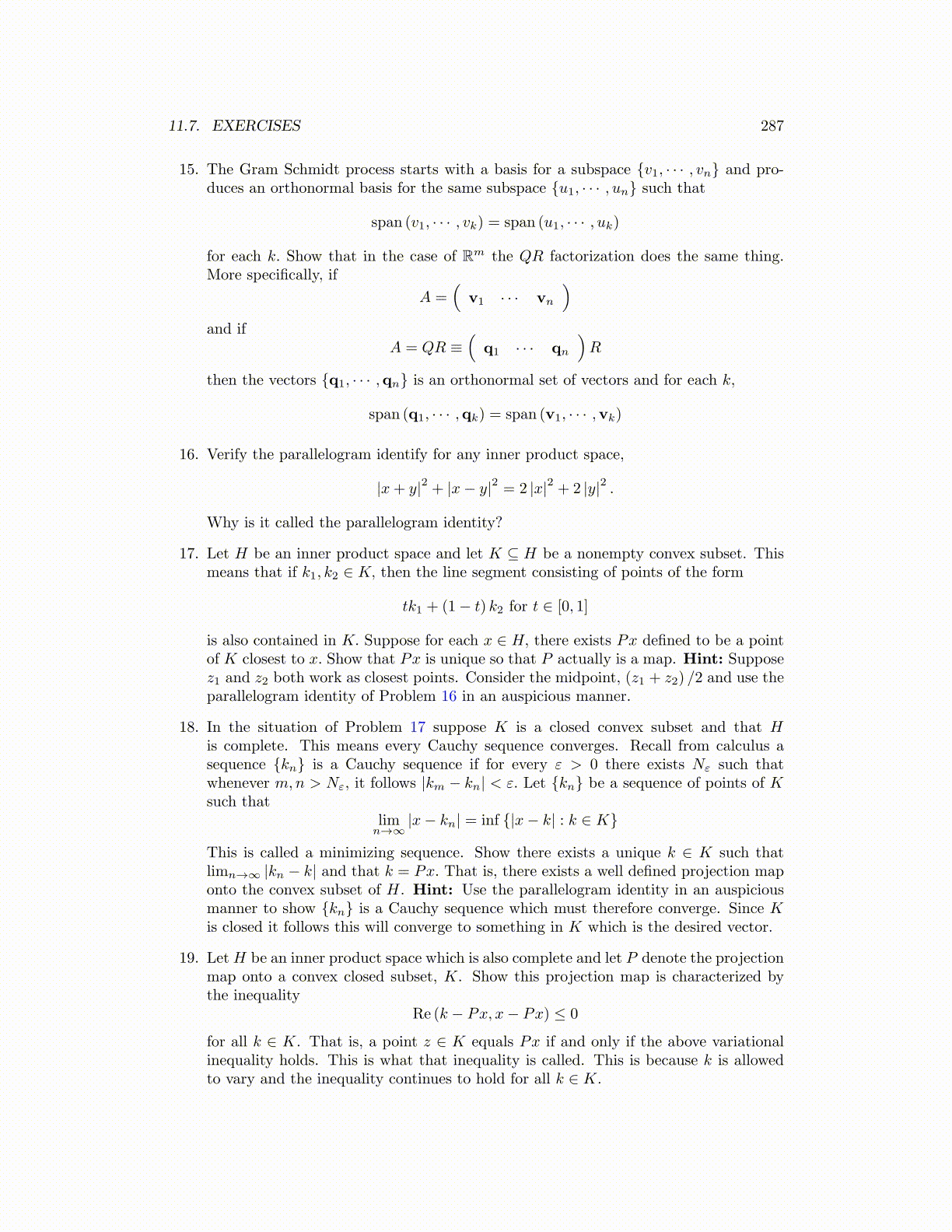
11.7. EXERCISES 287
15. The Gram Schmidt process starts with a basis for a subspace {v1, · · · , vn} and pro-duces an orthonormal basis for the same subspace {u1, · · · , un} such that
span (v1, · · · , vk) = span (u1, · · · , uk)
for each k. Show that in the case of Rm the QR factorization does the same thing.More specifically, if
A =(
v1 · · · vn
)and if
A = QR ≡(
q1 · · · qn
)R
then the vectors {q1, · · · ,qn} is an orthonormal set of vectors and for each k,
span (q1, · · · ,qk) = span (v1, · · · ,vk)
16. Verify the parallelogram identify for any inner product space,
|x+ y|2 + |x− y|2 = 2 |x|2 + 2 |y|2 .
Why is it called the parallelogram identity?
17. Let H be an inner product space and let K ⊆ H be a nonempty convex subset. Thismeans that if k1, k2 ∈ K, then the line segment consisting of points of the form
tk1 + (1− t) k2 for t ∈ [0, 1]
is also contained in K. Suppose for each x ∈ H, there exists Px defined to be a pointof K closest to x. Show that Px is unique so that P actually is a map. Hint: Supposez1 and z2 both work as closest points. Consider the midpoint, (z1 + z2) /2 and use theparallelogram identity of Problem 16 in an auspicious manner.
18. In the situation of Problem 17 suppose K is a closed convex subset and that His complete. This means every Cauchy sequence converges. Recall from calculus asequence {kn} is a Cauchy sequence if for every ε > 0 there exists Nε such thatwhenever m,n > Nε, it follows |km − kn| < ε. Let {kn} be a sequence of points of Ksuch that
limn→∞
|x− kn| = inf {|x− k| : k ∈ K}
This is called a minimizing sequence. Show there exists a unique k ∈ K such thatlimn→∞ |kn − k| and that k = Px. That is, there exists a well defined projection maponto the convex subset of H. Hint: Use the parallelogram identity in an auspiciousmanner to show {kn} is a Cauchy sequence which must therefore converge. Since Kis closed it follows this will converge to something in K which is the desired vector.
19. LetH be an inner product space which is also complete and let P denote the projectionmap onto a convex closed subset, K. Show this projection map is characterized bythe inequality
Re (k − Px, x− Px) ≤ 0
for all k ∈ K. That is, a point z ∈ K equals Px if and only if the above variationalinequality holds. This is what that inequality is called. This is because k is allowedto vary and the inequality continues to hold for all k ∈ K.